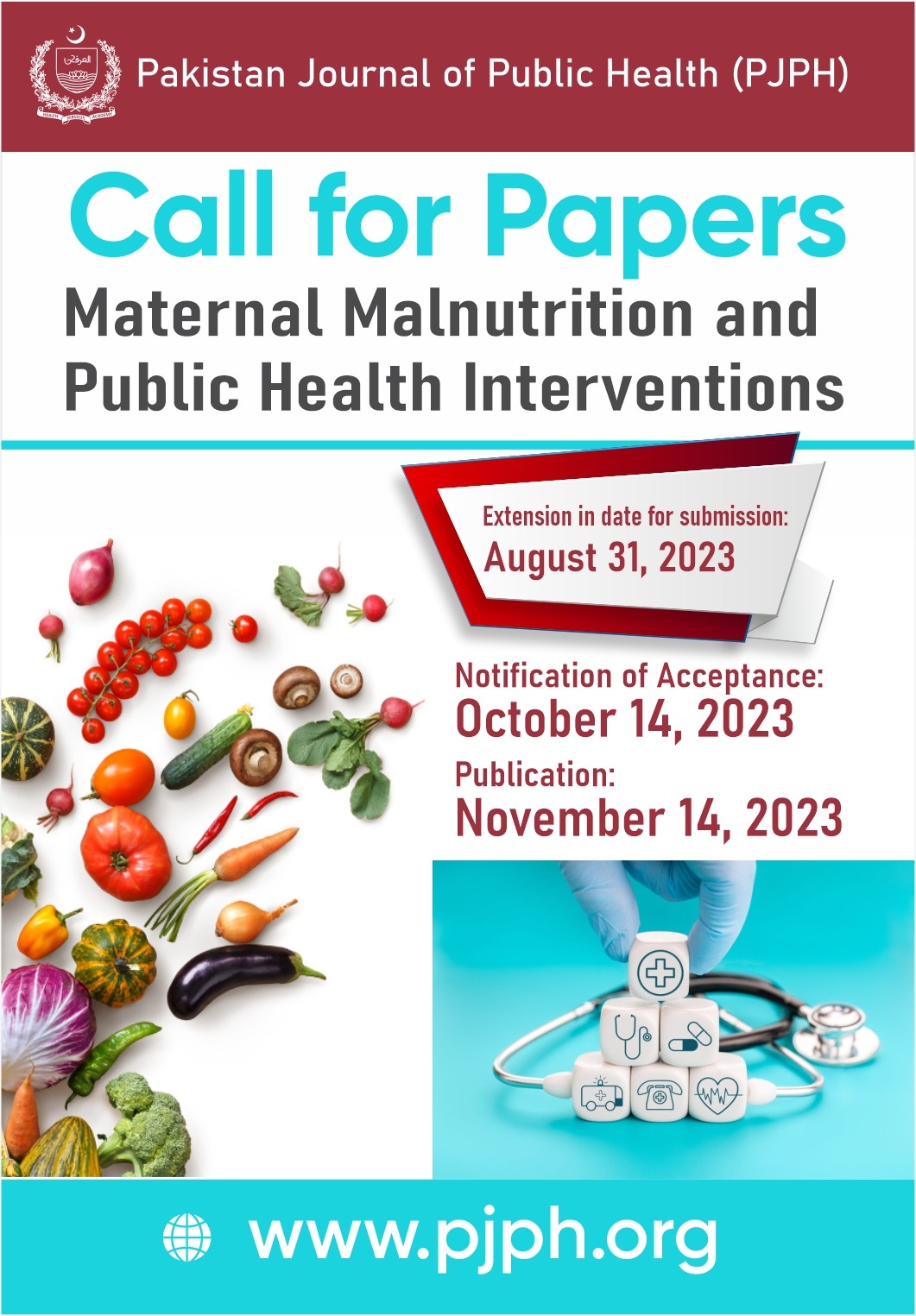Likelihood of Eating Disorders and its Co-occurrence with Anthropometric Indicators by using SCOFF Questionnaire in Females in District Hyderabad, Pakistan
Keywords:
SCOFF, Body Mass Index, Anthropometric indices, Junk foodAbstract
Background: Eating disorder is the heterogeneous group of disorders associated with either complete or partial withdrawal or excessive intake of food. The prevalence of Eating disorders EDs is increasing day by day because of the fluctuating eating habits in order to keep thin or slim or what we called as the socially accepted fitness. The prevalence of eating disorder is not only upsurging in developed countries but also in developing countries especially in Pakistan, where the population shows a mix blend of malnutrition and Eating disorders, at one hand the few cities are showing sever malnourished, on the other hand high prevalence of eating disorders is reported in some other cities. The present study thus revealed the occurrence of eating disorders and its association with anthropometric indicators.
Methods: A cross sectional study was designed and the survey was conducted by using SCOFF questionnaire and self designed questionnaire. The sample size (n) was 445. An apparently healthy females aging between 18-25 was recruited through random sampling method.
Results: The younger age group (18-21 years) is at more risk of likelihood of Eating disorders. The risk of EDs is associated with urbanization, junk food and marital status of women. The anthropometric indices (Weight, waist, Hip circumference, BMI, Waist to hip ratio, waist to height ratio, biceps and triceps were significantly increased in SCOFF positive female (p-values: 0.0005, 0.0004, 0.01, 0.0001, 0.01, 0.0004, 0.0002 and 0.0004 respectively).
Conclusion: the study concludes occurrence of EDs and its association with anthropometric factors.
Downloads
Published
Issue
Section
License
Copyright (c) 2021 Pakistan Journal of Public Health

This work is licensed under a Creative Commons Attribution-NonCommercial 4.0 International License.






